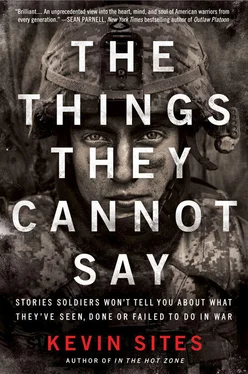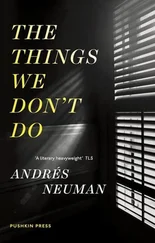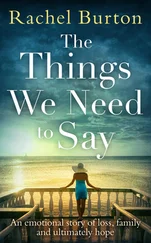Still being able to connect with people, as well as his emotions, I realize, is possibly the key to his postwar readjustment.
After a particularly bloody fifteen-month combat deployment to Iraq, he was actually surprised he could feel anything at all. Shutting down was the default mode for so many in the military, silent stoics bearing their burdens in isolation. This was not how Morris Goins operated.
There are twenty-eight dog tags, Goins tells me, hanging from his fireplace mantel. They belonged to the 1st Battalion, 12th Cavalry soldiers killed in action in and around Baqubah, Iraq, under his command. Another two hundred were wounded. When they first arrived in 2006, they were driving around in Humvees without much drama, but when they moved their outpost into an Iraqi police station, it was like the switch was turned on.
“The next ten months were like Saving Private Ryan at Omaha Beach,” says Goins. Seventeen of his tanks, thirty-four Bradley Fighting Vehicles and thirty-three Humvees were damaged or destroyed during operations.
“I know of only one other battalion that had more KIAs [killed-in-action incidents] than me in the entire campaign,” Goins says. “We were eating twenty-five IEDs a day. I got choked up during that time and my guys knew it bugged me. I remember one of my soldiers saying, ‘Sir, nobody wants to be you, hang in there.’”
And then there was the mother writing to him before they deployed.
“I need you to bring my son back alive.”
And another writing him during the deployment.
“I need you to bring my son home. His father is sick.”
And during one particularly ugly stretch, the so-called lonely burden of command only got lonelier.
“I lost nine dudes in eleven days,” he says.
He wrote all the families personal letters, because the standard letter is BS. “I tell them this is what your son died for, this is what I remember about him.”
At Harvard, Goins has the time to ponder those fifteen months and to try to understand who he was in war and how it has changed him.
“I think a lot about the loss of life,” he says. Unlike many soldiers both above and below his rank, he knows the value of emotion and not burying it. While still in Iraq, he was starkly candid with Britain’s Guardian newspaper in 2007, concerning a story about the loss of his men. “Sometimes you can’t keep it together,” he said. “I don’t have the strength. I am human just like you. But these dudes, they need you to be calm and thinking straight, not getting angry and wanting to kick down some doors. That does not mean I won’t come back and lock the door and cry by myself. I have eye drops on my desk to clear my eyes. I have my Bible and I do a lot of praying. Then I can go back out again and do what I need to do.”
He remembers getting the news of two of the first casualties of his battalion. His sergeant major told him that their engineers hit an IED while out on patrol. He opened his hands to reveal a slip of paper. In it were the names of two soldiers with the letters “KIA” next to them. Goins said he sent a Quick Reaction Force (QRF) to retrieve the bodies. When the force returned, Goins said he went to the gate to meet them. He walked alongside the Bradley carrying the bodies and, touching it, began to weep. He helped remove them from the vehicle to take them into the graves registration building, where men and their body parts are reunited before being choppered out.
Goins called the battalion together and told them “not to forget those guys, send letters to their families, talk amongst yourself, get the emotions out.” Goins said he himself was choked up. He asked the chaplain to lead them in prayer, but the chaplain deferred to him, saying, “No, you do it, sir.”
Goins said he began the prayer without bothering to hide his grief, tears running down his face, like an old-time Baptist preacher overcome by the spirit. “Comfort the families, Lord, comfort us. Keep us strong and keep us from doing the things we don’t want to do.”
But there was something tactical about what he was doing and saying as well. He was encouraging his men to vent their emotions in sadness now, so they wouldn’t do it in anger later.
“I prayed to the Lord to keep us from turning evil,” Goins says, “to keep us from revenge. You can kill people anytime,” he says, “a monkey can do that. We have to do it right.”
Goins thinks he was able to do it right and keep his men focused on the mission rather than revenge, but personally, he says, it meant coming to terms with the two very different dimensions of himself.
He literally calls them Mo and Morris, reflecting the concept of the shadow self or alter ego discussed in earlier chapters, but for Goins they were simply a way to more effectively explain the firewall he maintained between the soldier and the man.
“Morris is the guy that is out bass fishing and gut-hooks a fish or hits a squirrel and feels bad. Morris is the guy who’s really sensitive. But when I’m operational I’m Mo. Mo makes decisions based on fact.”
Goins provides me with a simple yet striking example from Iraq of the differences between his alter egos.
“We’re on a mission and we’re taking fire from a house. Through our scopes we can see the shooter goes back inside. We can also see two little kids inside the house as well. We’ve got birds [choppers] flying overhead and I give them the order to take it down. But there are kids in the house! I thought about those kids for about two seconds. Take it down. Boom! That’s not my problem.”
Goins is married, even has a son of his own, C.J. He can understand this may sound callous, but Mo’s thinking is clear, logical and without emotion. He believes—no, he knows—that he’s saving his men’s lives.
“I’m responsible for the lives of my guys. I’m not responsible for those kids. Whoever started shooting at us was. Now, I don’t have problems living with both [Mo and Morris], but other people do. There are those that need killing and those that need helping,” he says, as if stating an obvious fact.
Former Army Ranger Lieutenant Colonel Dave Grossman would likely agree with Goins’s rationale. In his book On Killing , Grossman observed that properly trained soldiers can become like reflexive weapons, able to kill quite efficiently, after they’ve predetermined the parameters for doing so. He wrote, “Usually killing in combat is completed in the heat of the moment, and for the modern properly conditioned soldier, killing in such a circumstance is most often completed reflexively, without conscious thought. It is as though a human being is a weapon. Cocking and taking the safety catch off of this weapon is a complex process, but once it is off the actual pulling of the trigger is fast and simple.”
In this context, Goins obviously knows his parameters, understanding even before he’s in a fight that his responsibility to the safety of his men and his own moral code will dictate when he will keep his safety on and when he will pull the trigger, whether Morris or Mo will be in charge. While those choices can be clear on the battlefield, Goins admits that it’s sometimes difficult to keep the man separated from the soldier in the aftermath.
Goins recalls being out in the field during a firefight when two young Iraqi girls were wounded in the crossfire. During the incident Goins pulled up to a residential area where his medic was working on one of the girls.
“But she’s so jacked up she doesn’t look like she’s going to survive,” says Goins. Then he heard over the radio that there was another wounded girl a little farther up. He told the medic they needed to leave the first girl behind and see what they could do for the second. When they reached the second girl, they discovered she was badly hurt as well but might survive with advanced medical treatment back at their base. When the medic picked up the girl up to put her in the Humvee, she began to cry and her parents, standing in the doorway of their house, told them not to take her away. The medic ignored them, still holding the girl, until Goins said, “Sit her down—and let’s go.”
Читать дальше












